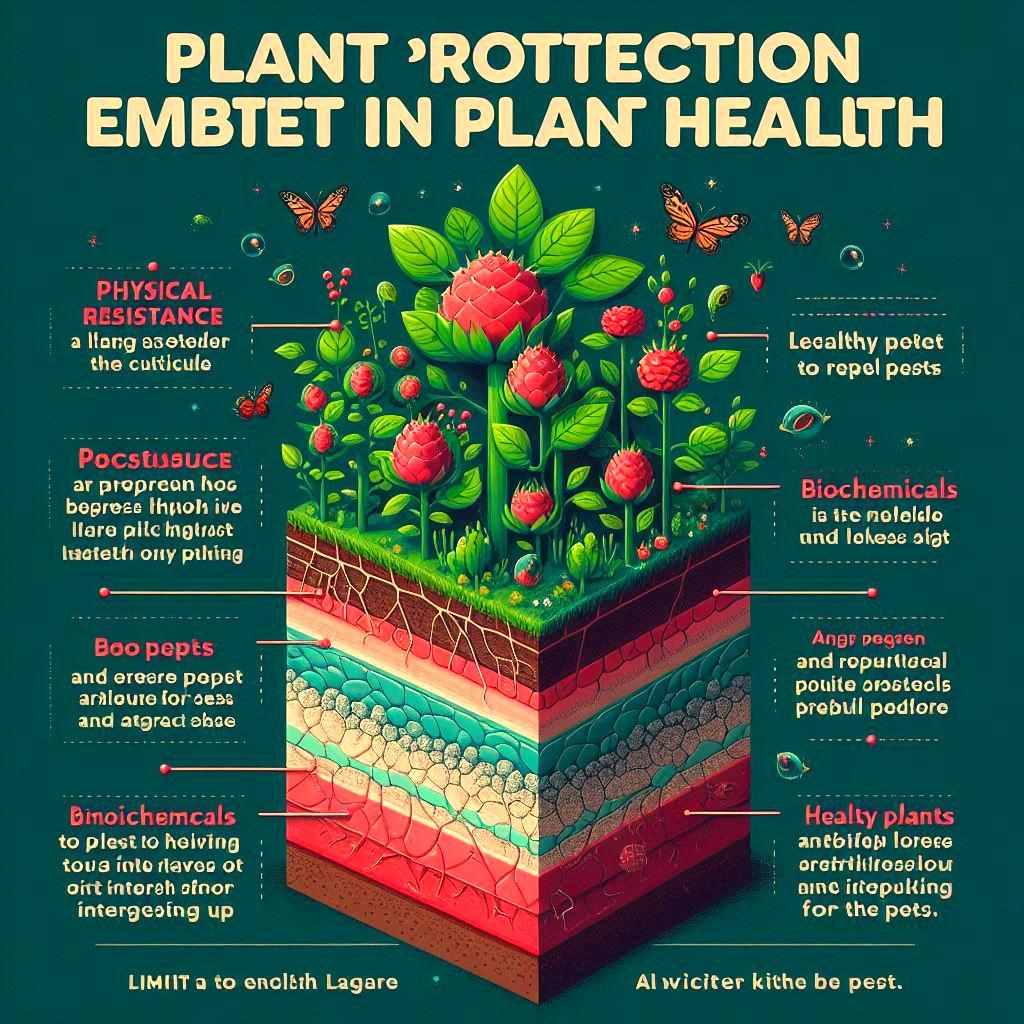
In the article “Efficient Photosynthesis: The Cornerstone of Life,” we explored various strategies to boost sugar production in plants and the creation of a silica wall beneath the cuticles to enhance plant defense mechanisms.
Plants transport nutrient-rich sap through specialized tissues known as xylem and phloem. This sap is essential for their growth and development. However, various pests and pathogens are constantly attempting to attack plants to feed on this sap. These pests can be classified into three main categories based on their feeding habits and the strategies they use to attack plants:
1. Sucking Pests: This category includes pests such as whiteflies, aphids, jassids, and mites. These insects attempt to puncture the plant cuticles and suck the nutrient-rich sap. The presence of a silica wall just below the cuticle significantly complicates this process. The silica wall acts as a formidable barrier, making it difficult for these pests to penetrate the cuticle. Moreover, their feeding apparatus, or stings, often get damaged when trying to breach the silica barrier. Consequently, their ability to feed on the sap is severely impaired, reducing their overall impact on the plant.
2. Biting Insects: This category primarily consists of larvae that feed by chewing on plant leaves. The hard silica wall poses a significant challenge for these insects as well. The toughness of the silica makes it difficult for the larvae to chew through the leaves, causing damage to their teeth and reducing their feeding efficiency. This not only limits the damage they can cause but also reduces their survival rate as they struggle to obtain sufficient nutrients.
3. Fungi: Fungal pathogens attempt to infiltrate the plant by inserting their roots, or hyphae, into the plant tissues to access the nutrients. The silica wall acts as a robust physical barrier, preventing fungi from easily establishing themselves within the plant. This makes it harder for fungal infections to take hold and spread, thereby protecting the plant from potential damage and disease.
Overall, the physical protection provided by the silica wall is crucial in depriving these pests and pathogens of their food source. This impacts all the part of plant from root to leaves. By making it difficult for them to feed, the silica wall effectively inhibits their growth and multiplication, offering a significant level of control over pest populations and reducing the incidence of disease.
Next, let us delve into how plants utilize the sugar they produce through photosynthesis. While a portion of this sugar is used to meet the plant’s immediate energy requirements, the remaining surplus is converted into various essential compounds, including amino acids (proteins), lipids (oils), enzymes, and phytochemicals. This process is analogous to how humans convert surplus sugar into fat for storage. In plants, the production of high-quality proteins and lipids is contingent upon having an ample supply of surplus sugar. This surplus enables the plant to generate nutrient-dense sap, which has several important implications:
1. Natural Defense System: Plants secrete a range of phytochemicals that serve to neutralize attacks and repel insects. These phytochemicals act as natural deterrents, making the plant less attractive to pests.
2. Attracting Predators: In response to herbivore attacks, plants release Herbivore-Induced Plant Volatiles (HIPVs). These chemical signals attract predators, such as ladybird beetles, that feed on the attacking insects. This biological control mechanism helps to reduce pest populations naturally.
3. Deterring Insects: Many insect pests have relatively simple digestive systems and are not well-equipped to handle highly nutrient-rich sap. Consequently, they tend to avoid plants with such sap, preferring to move on to other plants that are more suitable for their dietary needs.
This still leaves us with viruses and bacteria to deal with. A healthy plant fights viruses quite well, while controlling sucking pests prevents the viruses from spreading to other plants. Bacterial infections are handled by plants in an interesting manner. The bacteria-infected tissues are surrounded by lignin and silica, and the nutrient supply to these tissues is blocked. Thus, the infection dies with the tissue and does not spread. Primary plant health and silica keep the plant’s response system very active. This is further strengthened by monthly dosing of KYTOPOT, which uses natural biopolymers.
Through these sophisticated defense mechanisms, plants can effectively protect themselves from a wide range of threats. The combination of physical barriers, biochemical defenses, and biological controls enable plants to maintain their health and productivity, ensuring their survival and growth in the face of various environmental challenges.
There was this interesting discussion I had with Mr Prateek
The teaser of Self Running Soil Revolution for an investment
The effectiveness of any microbial product depends not just on
Mitrasena (Army of friends) is global brand of Biowall Agrihealth Pvt Ltd. Mitrasena products & protocols enables seamless transition to non-toxic farming by concurrently offering Excellent Protection, Higher Productivity & Profit and, Ease of use.
We are a DIPP recognized Startup working for non-toxic crop protection. We are driven by a highly passionate and professionally competent team.
MitraSena © 2025 | All rights reserved | Innovatively Designed and Built by Social Mukul Media
Have any query about bulk orders? Get in touch with us.